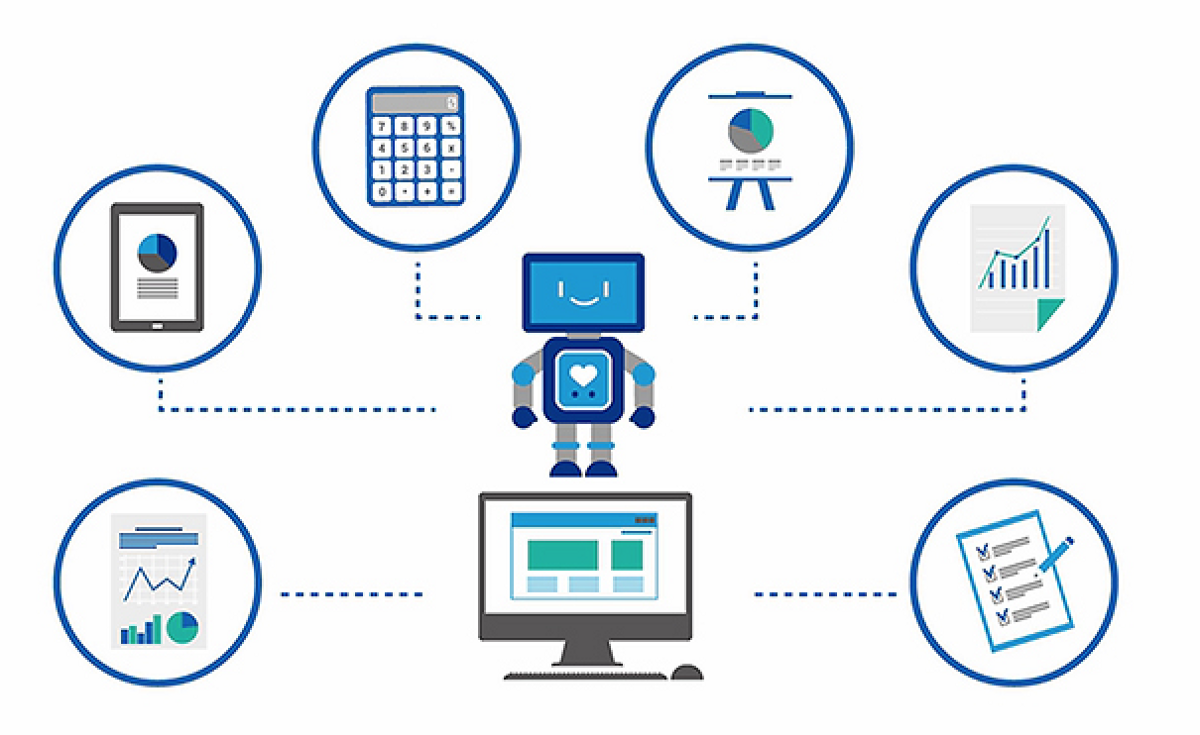
Robotic Process Automation
RPA or Robotic Process AutomationA software that performs manual and repetitive tasks performed by humans using digital systems; It is carried out by imitating it through a robot.
RPA is process automation software that automates business processes quickly and easily and eliminates human intervention. Robots used in robotic process automation can quickly adapt to jobs. When and how the robots work can be monitored, and their working times can be adjusted as desired.
RPA Robots have the same capabilities as humans on the digital platform and perform the same operations that humans do in digital environments. Therefore, there is no need to make any changes to business systems or applications in order to automate existing business processes. It helps digital transformation in organizations quickly and reliably by automating operational and time-consuming routine tasks.
Robots can read data from any digital platform, use any application interface, retrieve information from websites, add information to websites, make calculations, send e-mails, print or read data to the database, convert data into reports in the desired format, and find data in certain formats from files. It can manage the transfer of data between applications and perform your transactions without the need for integration between multiple applications.
Robotic process automation You can also contribute to the renewal of business processes. RPA Projects should not be understood as transferring business processes as they are. Processes can be eliminated from exceptions by binding them to rules after detailed analysis. In this way, business processes can be documented, the knowledge levels of employees regarding the work performed can be equalized, and the way of doing business can be changed and made more efficient.
What are the Benefits of Robotic Process Automation (RPA)?
Robotic process automation; in operational, repetitive and rule-based work,
- Provides Business Continuity: Robots work 24 hours a day, 7 days a week, at specified time intervals before or after work, ensuring that work is completed on time.
- Reduces Work Time: Data writing, data reading, data comparison, calculation, etc. performed in the processes. It reduces processing time by enabling many jobs to be completed faster.
- Increases Employee Productivity: It provides the opportunity to use highly knowledgeable human resources more efficiently by reducing operational loads. In this way, it increases employee motivation and contributes to increasing the number of innovative and high value-added jobs within the organization.
- Reset Error Rate: Robots are programmed according to certain rules. Accordingly, they do not make spelling, calculation or copying errors. Regardless of the experience and knowledge level of the personnel, they always perform the same level of operation.
- It is safe and provides ease of control: Processes carried out by robots can be monitored in real time and provide ease of auditing with detailed historical reports.
- Increases Customer Satisfaction: It ensures customer satisfaction by increasing service quality. It accelerates customer returns by eliminating clutter and blockages in the work done.
- Provides Fast Adaptation: It learns things easily and starts working immediately, without requiring integration.
What Types of Processes Can Be Automated?
With robotic process automation, routine workflows that employees perform on the digital platform, which do not require any decision mechanism, are high-effort, have only a digital data source and produce the same results in each repetition, can be automated. It contributes to organizations in terms of cost, time and efficiency in this type of operational work, which people consider as a waste of time and requires intense effort.
In your digital transformation journey;
- routine, repetitive, operational
- open to human error
- proceeding within the framework of certain rules
- Critical, requiring rapid intervention
- Contains digitally readable data inputs
- Effort-intensive, high-volume
- Monotonous, no decision required
- Not planned to change anytime soon
You can automate your processes.
Digital transformation is the reshaping of business processes by digital technologies. Robotic process automation With it, you can both manage business processes and gain cost, time and efficiency. Robotic Process Automation (RPA) Step into the digital world with!